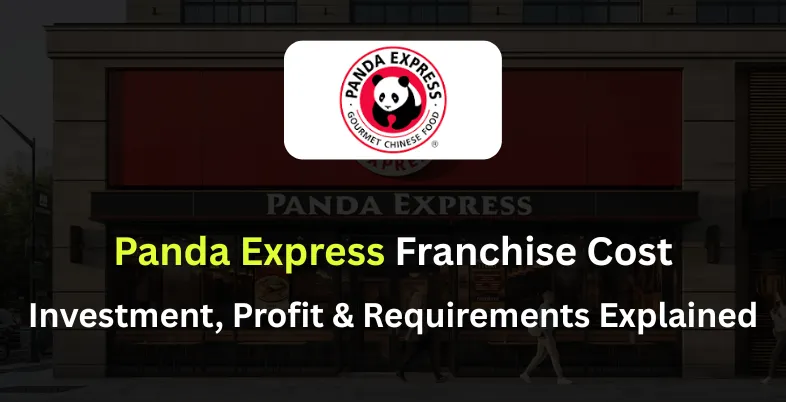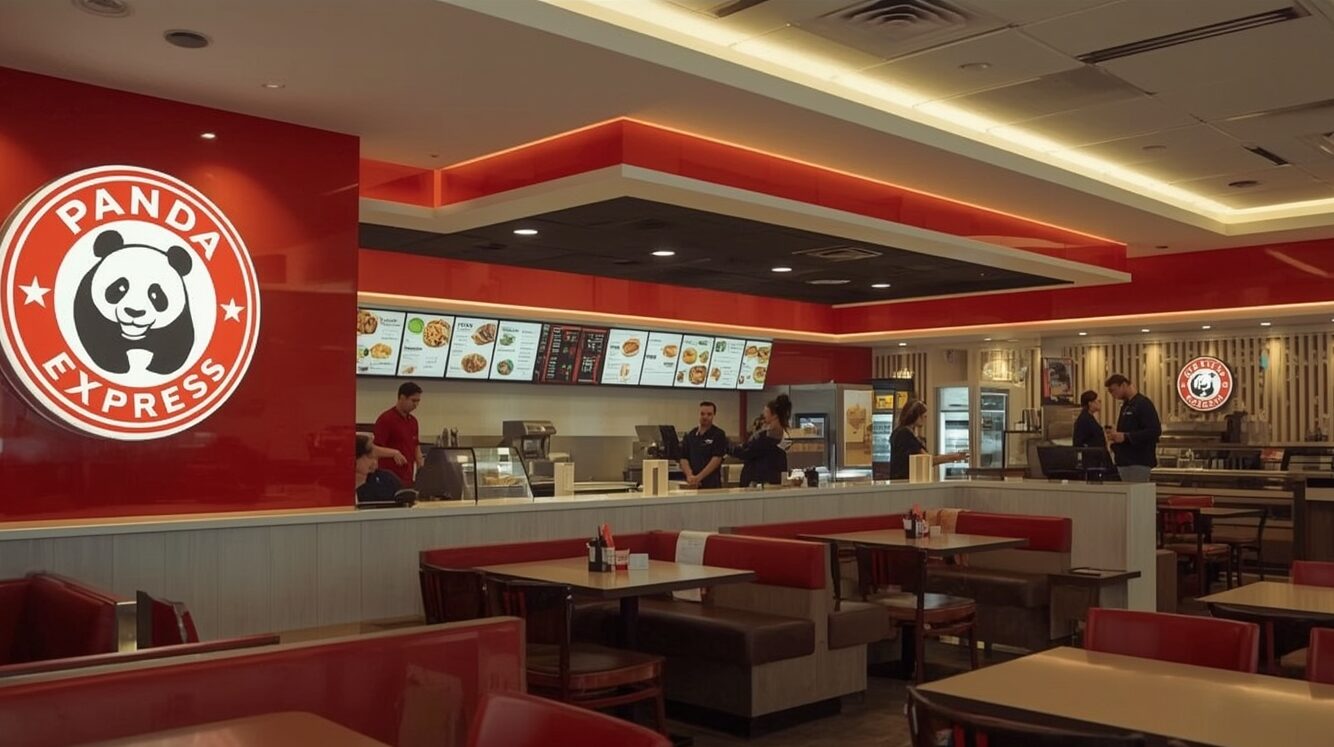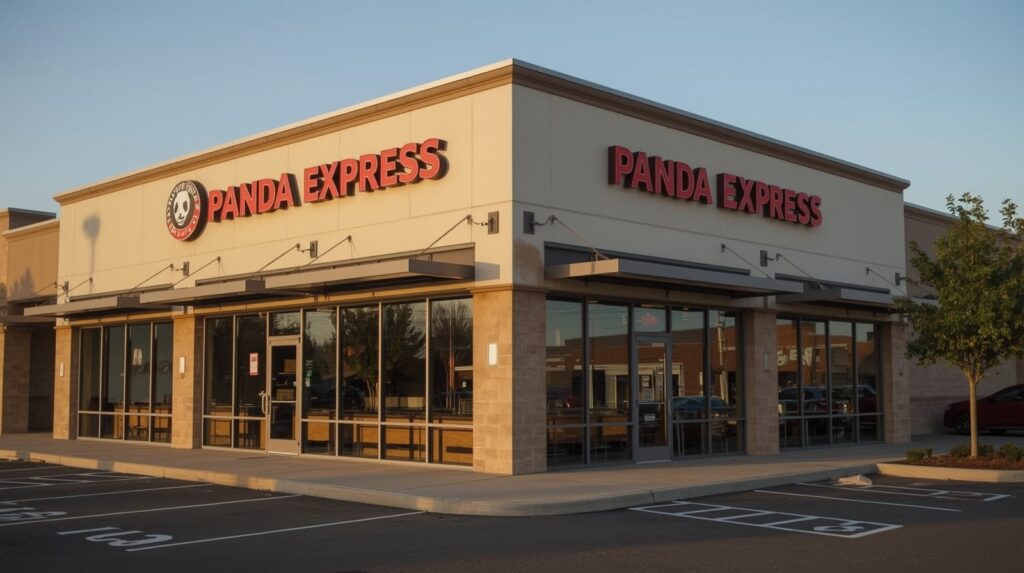Panda Express Franchise Cost: Investment, Profit & Requirements Explained

Are you wondering what it takes to own a Panda Express franchise? Famous for its signature Orange Chicken, bold Asian flavors, and fast-casual dining experience, Panda Express has grown into one of America’s most recognizable restaurant brands. With its strong emphasis on family values, operational excellence, and community spirit, joining Panda Express offers entrepreneurs a chance to partner with a brand that blends tradition with modern innovation.
However, owning a Panda Express franchise requires more than just passion for great food-it demands smart financial planning and a deep understanding of the investment involved. From franchise fees and construction costs to equipment, staffing, and ongoing royalties, each factor plays a vital role in determining your success.
In this blog, we’ll break down the Panda Express franchise cost, explore what’s included in the investment, and help you understand what it takes to be part of this globally trusted restaurant empire.
About Panda Express

Panda Express is a fast-casual restaurant chain with global business operations focusing on American Chinese foods, such as well-known entrees, fresh vegetables, and original sauces. Andrew Cherng and Peggy Cherng started the company in 1983 in Glendale, California, and since then, it has grown to become an international brand with more than 2,500 outlets in all of the United States and the few countries where the company has been established.
The idea is to deliver good quality and delicious food in a short period of time, addressing busy workers, families, and students. The commonly featured menu dishes are Orange Chicken, Beijing Beef, Kung Pao Chicken, Chow Mein, and assorted fresh sides and beverages. Panda Express has been able to draw popularity because of its dedication to freshness, quality uniformity and a menu that suits a broad spectrum of customers with authentic taste and convenient service.
Its franchise ownership is in high demand due to the well-established brand name, established working systems, and base of loyal customers. Panda Express has been growing internationally without compromising its original values of quality, innovations, and customer satisfaction.
Key Details of Panda Express Franchise
- Franchise Overview: Panda Express is a leading fast-casual franchise specializing in American Chinese cuisine, including popular entrees, fresh sides, and signature sauces. It is renowned for its consistent quality, quick service, and strong brand recognition in the United States and globally.
- Founded: Established in 1983 in Glendale, California, by Andrew Cherng and Peggy Cherng.
- Franchising Since: Panda Express has offered and registered franchises in various states since 1995, and began granting franchises under license agreements (including overseas) in 2004.
- Headquarters: Rosemead, California, USA.
- Number of Locations: Over 2,500 locations across the United States and several countries worldwide.
- Initial Investment: The estimated total investment to start a Panda Express franchise ranges from $300,000 to $2,000,000, depending on location, size, and format.
- Franchise Fee: The initial franchise fee is approximately $30,000 to $50,000, depending on the agreement and region.
- Royalty Fee: Ongoing royalty fees are generally around 6% of gross sales.
- Marketing Fee: Franchisees are required to pay the national advertising and marketing expenses of about 2% to 4% of the gross sales.
- Training and Support: Panda Express provides a comprehensive training, such as operations training, kitchen training, food safety training, and marketing support. Continuous facilitation involves supply chain support, technology support and operational counsel.
- Ideal Franchisee: It is targeted to the entrepreneurs who are of good quality, possess a high level of management skills, financial stability, and quality customer service. In particular, multi-unit and international operators are encouraged.
- Territory: Provides secured growth places to a small number of franchisees, where they have the exclusive right to conduct business in certain territories.
- Business Model: It is concentrated on the high volume sales, food quality, quick serving, and the flexibility in the location type, such as the mall-basis, standalone, and airport locations.
- Hours of Operation: The majority of the locations are open 10-12 hours every day, though some of the busiest places are open longer to ensure that they reach as many customers as possible.
- Technology and Innovation: Adopts the use of modern POS systems, online booking, delivery agreements, and customer loyalty programs to improve its efficiency and interaction with customers.
- Growth Opportunities: Panda Express has the potential to expand in single unit, multi-unit and international growth, as it has a good brand and operational experience to grow.
How much does a Panda Express Franchise Cost?
Investing in a Panda Express franchise involves several financial commitments. Below is a detailed breakdown of the costs associated with opening and operating a Panda Express franchise:
Initial Franchise Fee: $30,000 – $50,000
Total Initial Investment: Approximately $300,000 to $2,000,000
This investment typically covers:
- Setup Costs: $100,000 – $500,000
- Equipment Costs: $150,000 – $600,000
- Initial Inventory: $15,000 – $50,000
- Working Capital: $50,000 – $200,000
- Lease/Rent: $3,500 – $15,000 per month
- Additional Costs: $50,000 – $150,000
Ongoing Fees:
- Royalty Fee: 6% of gross sales
- Advertising Fee: 2-4% of gross sales
Financial Requirements:
- Net Worth: Minimum of $500,000 – $1,000,000
- Liquid Capital: Minimum of $250,000 – $500,000
Franchise Agreement Term: Typically 10–20 years, depending on location and agreement, with renewal options.
Additional Considerations:
- Space Requirements: Average franchise locations require 1,800 – 3,000 sq ft of space.
- Staffing: Each location usually employs 15 to 25 staff members depending on size and operations.
- Training and Support: Panda Express provides comprehensive training, including kitchen operations, food safety, management procedures, and ongoing support in marketing, operations, and technology.
- Profit Potential: Annual revenues vary from $1 million to $3 million, depending on location and traffic, with potential profit margins of 15–25%, allowing a return on investment within 3–5 years.
Panda Express has a favorable franchise scheme with a brand that is well known worldwide, good menu and an effective operating system. Potential franchisees are required to meet the financial requirements and willing to uphold the operations standards to attain the long-term success of the business.
What is the Profit Margin when owning a Panda Express?
- Projected Revenue: The yearly average revenue per outlet of Panda Express is estimated to range between 1,000,000 and 3,000,000 dollars, based on location, size of the store, demand and customer traffic in the market.
- Average Profit Margin: Net profit margin of franchisees is estimated to be 15-25 percent once all the factors like labor, rent, royalties and even supply of ingredients are put in consideration.
- Cost of Goods Sold (COGS): The percentage of menu foods such as Orange Chicken, Beijing Beef and fresh sides range between 25-35 percent of the sales since it requires consistency of quality and preparation of the foodstuffs.
- Labor Costs: The labor costs usually take 20-30 percent of gross sales and since the Panda Express stores remain open late, there should be sufficient kitchen and front-of-house staff.
- Royalty and Marketing Fee: The franchisee will typically pay 6 percent royalty fee and 2-4 percent marketing/advertising fee that will be about 8 to 10 percent of gross sales.
- Fixed Overheads: Rent, utility and insurance usually consume between 12-18 percent of revenue and once again this is subject to suburban or urban location, and size of the store.
- Operational Efficiency: Consistent operational processes, well-developed chain, and uniformity of the menu enable managing and being profitable in the long-term.
- Break-even Period: The majority of franchisees claim to achieve break-even in 3-5 years, depending on the location performance, local competition and efficiency of operations.
- Owner Involvement: The revenues and profitability tend to be greater in the case of active owner-operators, and profit margins can be lower in the case of absentee ownership as a result of less direct control.
Explore other franchise options:
- Anytime Fitness Franchise Cost
- Monginis Franchise Cost
- Mio Amore Franchise Cost
- Dutch Bros Franchise Cost
How to apply for a Panda Express Franchise
- Go to the Official Website: Begin by going to the official Panda Express site to find available franchise opportunities, requirements and criteria of eligibility with reference to your area or country of investment.
- Send a Franchise Inquiry: Complete the Panda Express franchise inquiry form using your personal, business, and financial information to indicate your interest. Make sure you point out any applicable restaurant or retail experience.
- Application Review: The Panda Express development department will look into your application to verify your financial ability, operations history and how well you fit into the family-oriented service culture.
- Preliminary Discussion and Interview: The qualified candidates will be invited to an interview or discovery call where they will be able to talk about the model of the franchises, expectations, and the norms of operations in more detail.
- Franchise Disclosure Document (FDD): The approved applicants would be given the FDD, which details the startup cost, ongoing fees, responsibilities and support programs to be taken up by the franchisee so that you make the final decision.
- Due Diligence & Approval: Panda Express performs background and financial checks in order to check your credibility and ability to keep the quality and customer services standards of the brand.
- Site Selection & Build-Out: After approval you will work with Panda Express to select one of the best sites that comply with brand requirements in terms of visibility, traffic, and demographics.
- Sign Franchise Agreement and Training: With the final approval, you are going to sign the franchise agreement and go through the comprehensive training program to learn how to operate the restaurant, how to manage it, and what Panda Express values before you open your store.
Why should you choose the Panda Express Franchise?

The decision to purchase a franchise of Panda Express gives an entrepreneur an opportunity to be a part of the well-known brand within the fast-casual restaurant business, focusing on American Chinese cuisine and enjoying wide demand on a daily basis. The Panda Express has a customer base that has been developing throughout the years and it has a long history of close to forty years of loyal patrons who trust the restaurant to offer quality food in a fast delivery manner.
The menu of the brand concentrates on superior quality and tasty entrees and sides, which appeal unanimously to families, professionals, and students. Panda Express franchisees enjoy a tested system of operations, extensive training programs, marketing, supply chain management, and technology support. The uniform systems of operations and effective kitchen management makes the management of a location easy and reproducible. Panda Express has a high level of revenue potential with many of its outlets located in busy locations like malls, airports, and independent premises.
Although start-up costs may be high, the excellent brand name, efficiency and customer base give the brand a chance to be profitable and grow over time. Panda Express will be a good option to entrepreneurs, multi-unit operators, or others seeking to go global. It presents an opportunity to merge an interest in serving food with a time-tested, successful business model that has a globally recognized brand.
Pros and Cons of Panda Express
Pros:
- Good Brand Recognition: Panda Express is a well-known brand in the Asian fast-food restaurant around the world that has maintained high standards of quality and has the ability to appeal to a wide range of people.
- Well-tested Operational Model: Panda Express has decades of experience giving licensed operators systems that are tested, standardised operations and dependable supply chains.
- Different Menu: Provides an attractive menu with Orange Chicken, Beijing Beef, fried rice and other seasonal foods, which are attractive to a wide range of customers.
- Extensive Training: New licensees are provided with extensive training on how to operate, prepare food, treat the customers and meet brand requirements.
- Huge Revenue Potential: When licensed in busy venues like airports and casinos, they have the potential to make high sales, sometimes reaching above one million in a year.
- Corporate Support: Continued operational support, marketing advice and brand provision assist in ensuring a consistent quality and service.
- Controlled Growth: By licensing in non-traditional locations, operators operate where the customers flow is already established.
- Technology Integration: The sophisticated POS systems, delivery collaboration, and loyalty programs can be used to enhance efficiency and customer interaction.
Cons:
- Large Startup Costs: Licensed locations involve start up costs between $510,000 and $3,268,000, which may be prohibitive to smaller investors.
- Limited Opportunities: Panda Express is not the type of company that provides traditional franchising; only non-traditional locations such as airports, casinos, and universities can be franchised.
- Stringent Requirements: The future licensees should possess high financial qualifications (net worth: 1 million dollars, liquid assets: 500,000 dollars) and business standards.
- Recurring Fees: Licensees are paid an 8% royalty fee and 2% advertising fee, which cuts down net margins.
- Burdensome Operational Processes: The operation of a licensed place needs intense management and participation, especially the operation of the high-traffic places.
- Location-Dependent Performance: The non-traditional venue is very sensitive to its suitability and traffic that determine the profitability.
- Limited Expansion Prospects: In contrast to conventional franchises, multiple-location prospects are limited and strictly controlled by the Panda Restaurant Group.
- Market Sensitivity: Licensed locations within niche venues can be susceptible to changes in traffic, seasonality or economic downturns, which impact footfall.
Ending Thoughts
Investing in a Panda Express licensed location is a significant financial commitment, but it offers a strong opportunity to operate under one of the most recognised quick-service Asian dining brands globally. With an initial investment ranging from $510,000 to $3,268,000, plus ongoing royalty (8%) and advertising fees (2%), the costs can be substantial, making it more suitable for financially capable entrepreneurs.
However, the benefits include strong brand recognition, a proven operational model, comprehensive training, and ongoing corporate support. The brand’s established menu, controlled growth strategy, and high-traffic non-traditional venues provide potential for strong revenue and business stability. For those prepared for active involvement and strict operational standards, a Panda Express licensed location can be a profitable venture with long-term growth potential and consistent returns.
FAQs
What are the financial requirements to qualify as a licensee?
Applicants must have a minimum net worth of $1,000,000 and liquid assets of at least $500,000.
How long is the licensing agreement term?
The standard licensing agreement is typically negotiated per location and venue, often ranging from 10 to 20 years depending on the non-traditional site and corporate approval.
What support does Panda Express provide to new licensees?
Support includes comprehensive training programs covering operations, food preparation, customer service, marketing guidance, store design and build-out assistance, and ongoing corporate operational support.